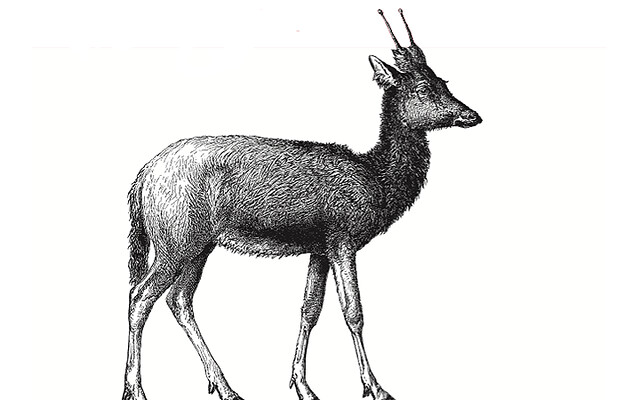Père David’s deer (Elaphurus davidianus), also known as the milu (Chinese: 麋鹿; pinyin: mílù) or elaphure, is a species of deer that is currently extinct in the wild—all known specimens are found only in captivity. Thissemiaquatic animal prefers marshland, and is native to the subtropics of China. It grazes mainly on grass andaquatic plants. It is the only extant member of the genus Elaphurus. Based on genetic comparisons, Père David’s deer is closely related to the deer of the genus Cervus, leading many experts to suggest mergingElaphurus into Cervus,[2] or demoting Elaphurus to a subgenus of Cervus.[3]
In the late 19th century, the world’s only herd belonged to Tongzhi, the Emperor of China. The herd was maintained in the Nanyuang Royal Hunting Garden in Nan Haizi, near Peking.[9] In 1895, one of the walls of the hunting garden was destroyed by a heavy flood of the Yongding River, and most of the animals escaped and were killed and eaten by starving peasants. Fewer than thirty Père David’s Deer remained in the garden. Then in 1900, during the Boxer Rebellion, the garden was occupied by troops and the remaining deer were shot and eaten, leaving the animal extinct in its native China.[1]
A few of the deer had previously been illegally transported to Europe for exhibition and breeding. After theextirpation of the Chinese population in 1900, Herbrand Russell, 11th Duke of Bedford, was instrumental in saving the species. He acquired the few remaining animals from European zoos and nurtured a herd at Woburn Abbey. Threatened again by both World Wars, the species survived largely due to the efforts of Bedford and his sonHastings, later 12th Duke of Bedford. The current world population, now found in zoos around the world, stems from the Woburn Abbey herd.[10]
(From Wikipedia, February 2015)




